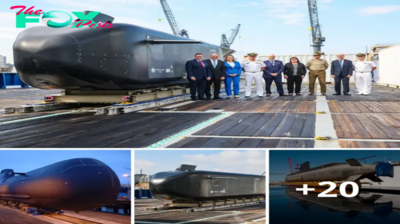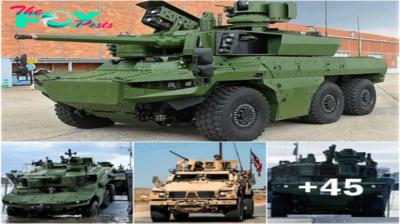1. HELLADS . High Energy Laser
The new generation of US military drones will not only carry certain missiles, but also be fitted with an ultra-light laser gun, capable of destroying objects continuously. Over the past four years, the Advanced Weapons Research Agency (DARPA) has awarded contractor General Atomics over $60 million to develop and plan HELLADS to be a 150kW power beam with a difference.

DARPA says that in the ‘final stage of development’ the system will be much lighter. It weighs only 750kg, which is less than a super light car. The laser’s potential can be amplified by the power of the Predator UAV itself. Despite being dubbed the ‘destructive beam’, laser weapons help to reduce secondary damage with great accuracy.
2. Falcon HTV-2 . supersonic flying device
The Falcon Hypersonic Technical Vehicle (HTV-2) drone is designed for mid-range and above flight. It has a speed of Mach 20, or 25,000 km/h (equivalent to 20 times the speed of sound in the atmosphere.). The purpose of the design is to hit targets anywhere on Earth with conventional weapons. At this speed, Falcon HTV-2 can fly from New York to Los Angeles in 12 minutes.

According to the Pentagon, HTV-2 represents the US Military in its ability to respond to any warning signal, no matter the level. It can replace a ballistic missile with a warhead without causing Russia or China to misunderstand a nuclear attack.
3. New generation submarine SSBN-X
US Naval Armament and Shipbuilding Command NAVSEA has signed a contract with General Dynamics’ Electric Boat division to design and build SSBN(X) strategic nuclear submarines, which in the future will replace submarines. Ohio class. This contract is worth 1.849 billion USD.

SSBN(X) details are currently confidential. It is predicted that in phase 1, the ship will be equipped with Trident II D5LE (Life Extension) extended-range ballistic missiles carrying nuclear warheads, as well as Tomahawk multi-purpose cruise missiles. The ships’ new nuclear reactors will not require refueling during the life of the SSBN(X). Each submarine of this class has 16 SSBN(X) ballistic missile launch wells located in the CMC compartment that the US and UK jointly developed.
4. ACTUV . submarine hunting robot
The Pentagon is poised to end the era of submarine domination on the oceans with the ACTUV submarine-hunting robot. The US Department of Defense has spent $58 million on this high-priority project.

Submarine hunting robot can independently in automatic mode hunt for submarines within 60-90 days and nights. The main means of ACTUV will be hydroacoustic navigation equipment. When an enemy submarine is detected, the ACTUV approaches it and transmits the submarine detection information to the nearest US warship. This robot ship can also follow a submarine until the submarine leaves the patrol area or is destroyed. Moreover, the robot does not have to be hidden, it can openly sweep the ocean using the most efficient radiation mode of the sonar.
SAIC experts believe that ACTUV will be able to detect all types of surface and underground targets: from nuclear submarines to watercraft.
5. Sniper bullets have the ability to change flight trajectory
The Department of Defense Advanced Research Projects (DARPA), the US Department of Defense, has begun development of guided ammunition for sniper rifles within the framework of the EXACTO (EXtreme ACcuracy Tasked Ordnance) project. The aim of the program was to create ammunition that would allow snipers to improve their shooting accuracy in conditions of variable winds or different bullet velocity between shots.

The new bullet will be able to change its flight path to a certain extent, and the bullet speed will be higher than the standard 12.7 mm bullet. According to DARPA’s assessment, the new ammunition will allow snipers to destroy moving targets at much higher speeds, in complex conditions such as strong winds and with much longer ranges than currently available.
6. Stealth armor on tanks
BAE Systems is a British Military and weapons Technology research company. Recently, this company has announced two latest technologies that make the tank invisible to infrared radar as well as to the naked eye.
They made a thermoelectric material capable of extremely rapid temperature changes. Thermoelectric materials are substances that have the ability to convert heat into electricity. In case of need, the microprocessor will adjust the temperature of the tank shell to the temperature of other objects, so that the observer with infrared binoculars will not be able to detect the target of the tank.

Another technology could help the tank’s outer shell change color like a chameleon for camouflage. With electronic sensors mounted on the outside of the shell, the new tank will be able to record images of its surroundings. It then analyzes the data to reproduce the most common colors, shapes, and textures of the environment on the case using a color-changing e-ink.
7. SBIRS . infrared tracking satellite system
SBIRS was born to replace the DSP satellite system, using satellites in geostationary and elliptical orbits, capable of continuously scanning areas on the ground to detect missile launches immediately upon activation. It is used to detect ballistic missile launches and provide warnings of potential nuclear attacks to the United States.

The presence of SBIRS GEO-1 in orbit continues to be a long step for the US in the program to improve missile warning capabilities. Together with the newly developed Aegis combat system combined with SM-6 missiles, the United States continues to be the world leader in missile defense and warning systems that are both effective in breadth and depth. depth.
8. Weapons to detect sighting machines

Devices equipped with optical and infrared cameras, used to “scour for, locate and destroy firing weapon systems or shooters, as well as to deal with a variety of other threats, such as bullets, anti-tank rockets, rockets and mortars are firing straight.” That is, targets can be static as well as dynamic.
The idea is to detect and identify threats quickly enough for automated systems or soldiers on the vehicle to react.
9. Jeteye missile defense system for aircraft

The new system, called Jeteye, is designed by BAE Systems (UK), using sensors and lasers during operation. When it detects a target, the Jeteye will fire a red laser directly at the missile’s optics, effectively blinding the missile and knocking it out of orbit.
With this Technology, Jeteye can effectively protect aircraft when attacked by missiles in the sky, especially hand-held heat-seeking missiles.
10. Jet Helicopter

DARPA’s next-generation helicopter project is a combination of the propeller system of a helicopter and the jet system of a fighter aircraft, creating an aircraft with diverse combat capabilities. The new generation helicopter will be able to take off vertically on many different types of terrain, after reaching the required speed, the propellers will be retracted inside and the jet system starts to work.











































